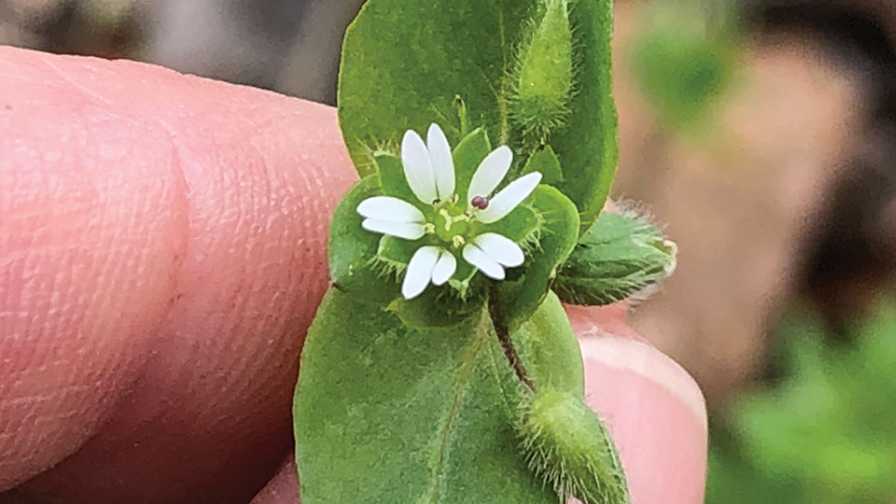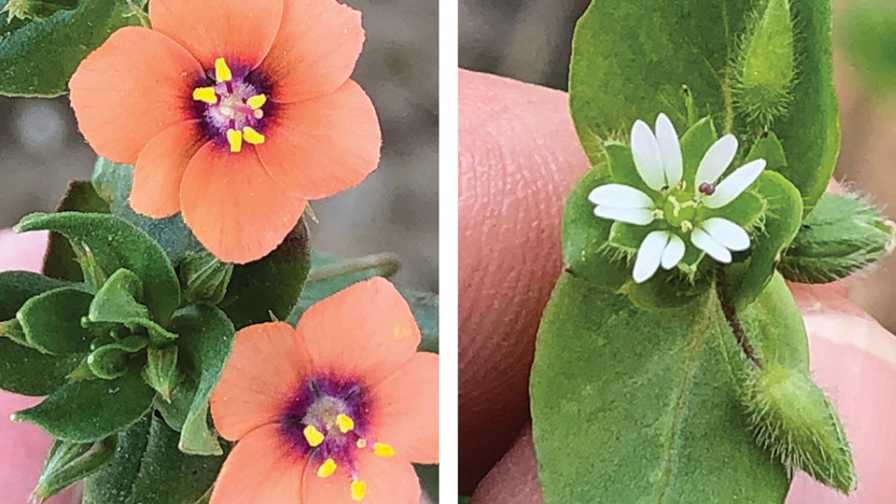Field Scouting Guide: Chickweed

Common chickweed in bloom.
Photo by Lynn Sosnoskie
This edition of Field Scouting Guide concentrates on Stellaria media (common chickweed). We reached out to Lynn M. Sosnoskie, Cornell University, to learn how to identify and manage this weed.
Basics
Scientific name: Stellaria media
Common name: Common chickweed
Geographical range: Native to Europe, but widely distributed in the U.S. and throughout the world
Crops affected: Common chickweed can infest in a variety of systems including: landscaped areas, lawns, perennial crops such as orchards, nurseries, early planted spring vegetables, other irrigated agricultural and horticultural areas. It can tolerate cutting and can invade older alfalfa stands that have become thin with time. While it can be found in many different habitats, common chickweed does like sites that are shady and moist.
Impact
Sosnoskie: I don’t have a dollar value on the economic impact, but spring vegetables and leafy greens that grow in competition with emerging chickweed could be impacted by dense stands.
Each plant can start producing up to 15,000 small seeds within five weeks of germination and emergence. Reports suggest these seeds can persist in the soil for up to a decade. This means once chickweed becomes established, you could be dealing with it for a long time.
Chickweed also is an alternate host for several plant viruses, like tomato spotted wilt virus (TSWV), and insect pests like thrips, that can impact desirable commodities.
With respect to when the weed becomes a problem, the impacts of competitive interactions will vary with the crop. All growers should make efforts to eliminate common chickweed before it reaches reproductive maturity. This species can produce significant amounts of small and long-lived seed that will perpetuate problems over time.

Many confuse mouse ear chickweed with common chickweed.
Identification
Sosnoskie: Common chickweed is a winter annual species in the Caryophyllaceae (pink family) that can become perennialized in some environments. It may be confused with mouse-ear chickweed, which also is widespread throughout the U.S. That weed is a perennial and has hairy and oblong leaves. Some also might confuse it for scarlet pimpernel, which has opposite leaves but has orange flowers and is in the primrose family.

Scarlet pimpernel (left) and common chickweed also can be mistaken for one another in the field.
Photos by Lynn Sosnoskie
Here are some tips to recognizing the weed:
- Habit. The plant is mostly prostrate; upper branches are more erect.
- Leaves. Leaves are opposite, light green in color, egg-shaped, and pointed on the end.
- Flowers. Flowers consist of five sepals and five white petals that are deeply lobed.
Recommended Treatment
Sosnoskie: The most effective treatment depends where you are located and what system you are in. In systems where soil disturbance can be used, cultivation should occur when the plants are small, and the soil is dry to prevent re-establishment. If hand-weeding, remove and dispose of plants to prevent re-rooting. The availability of herbicides will be dependent on the crop; check with your crop consultant or local Extension personnel about effective products.










